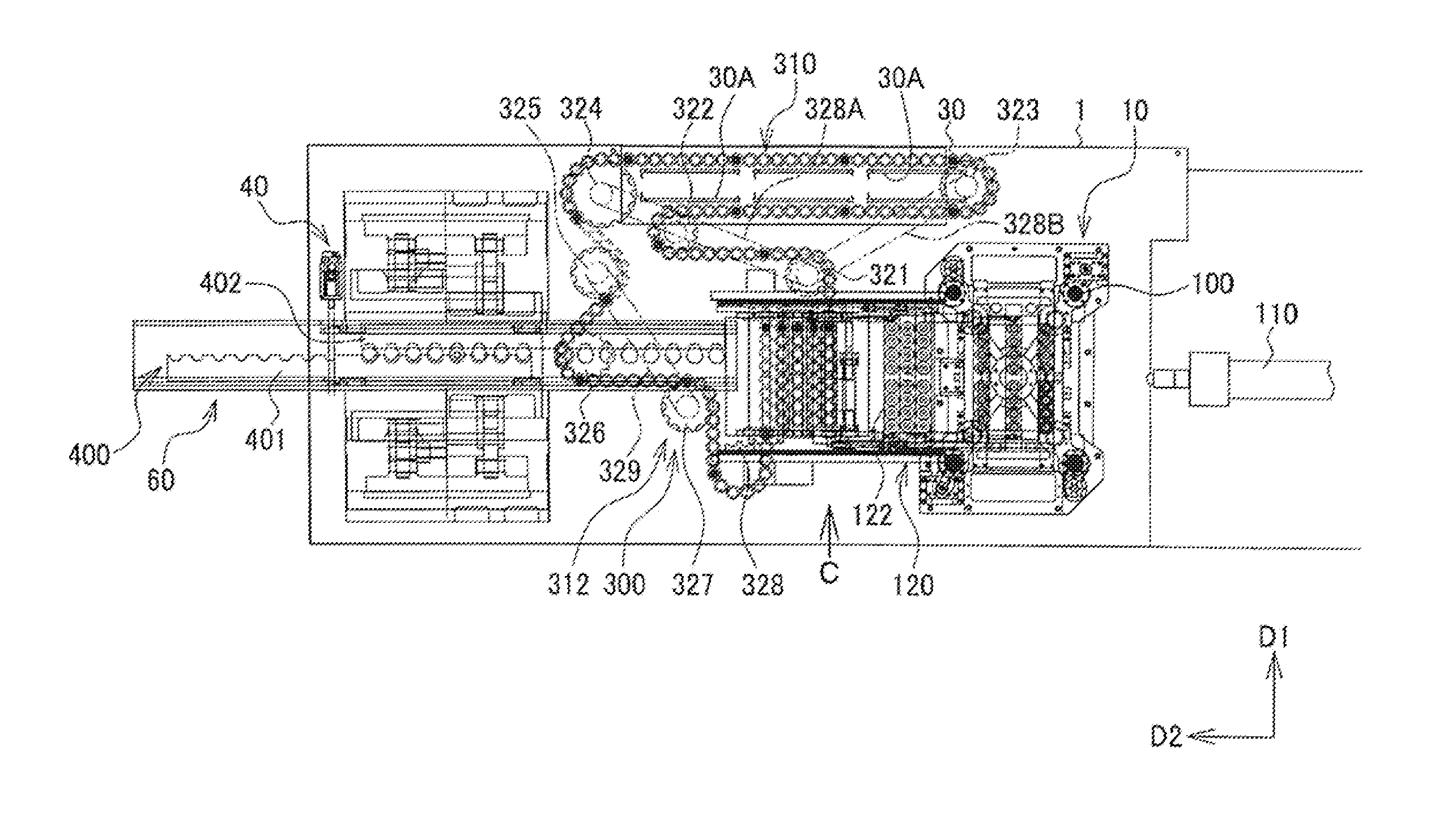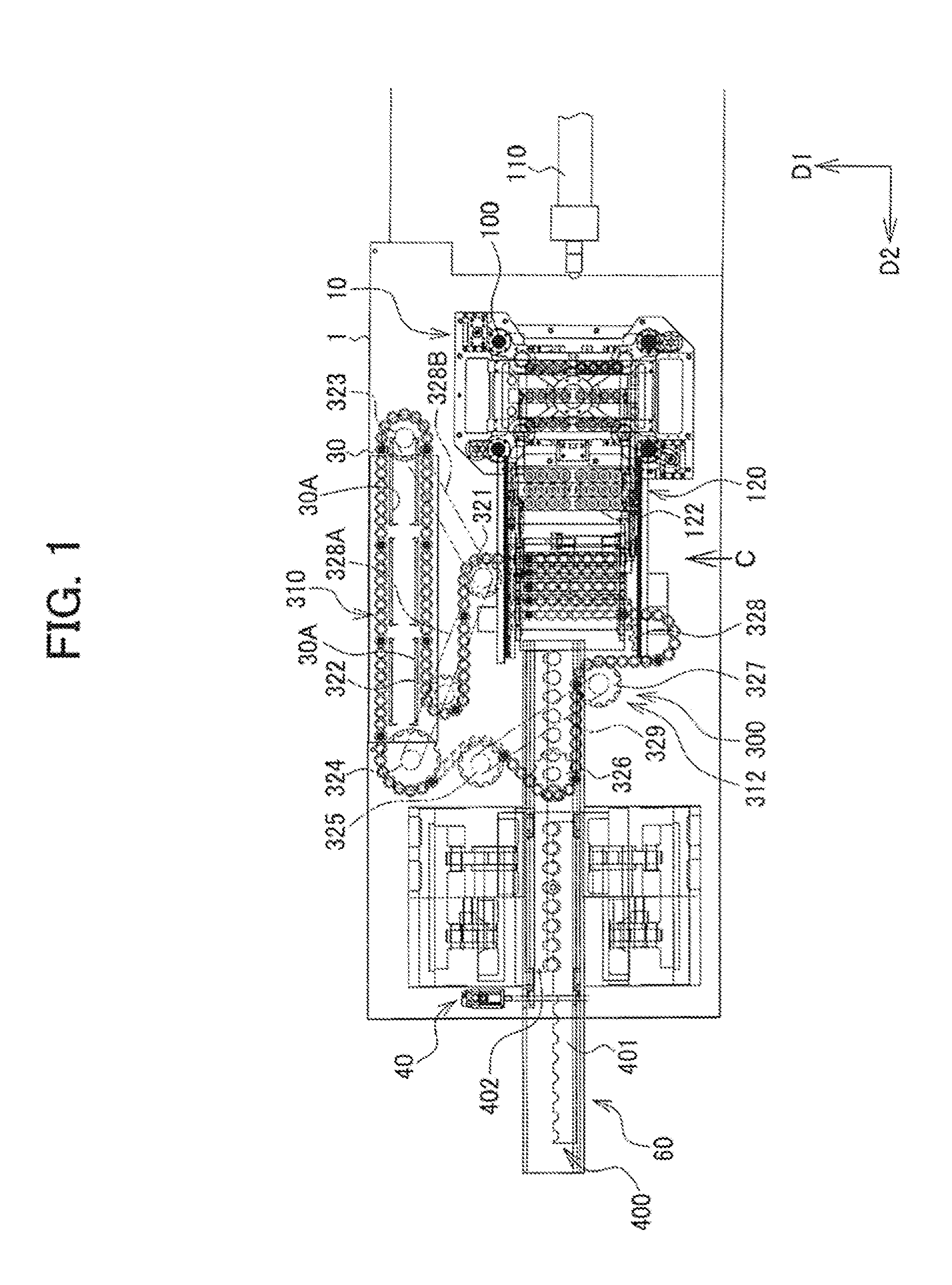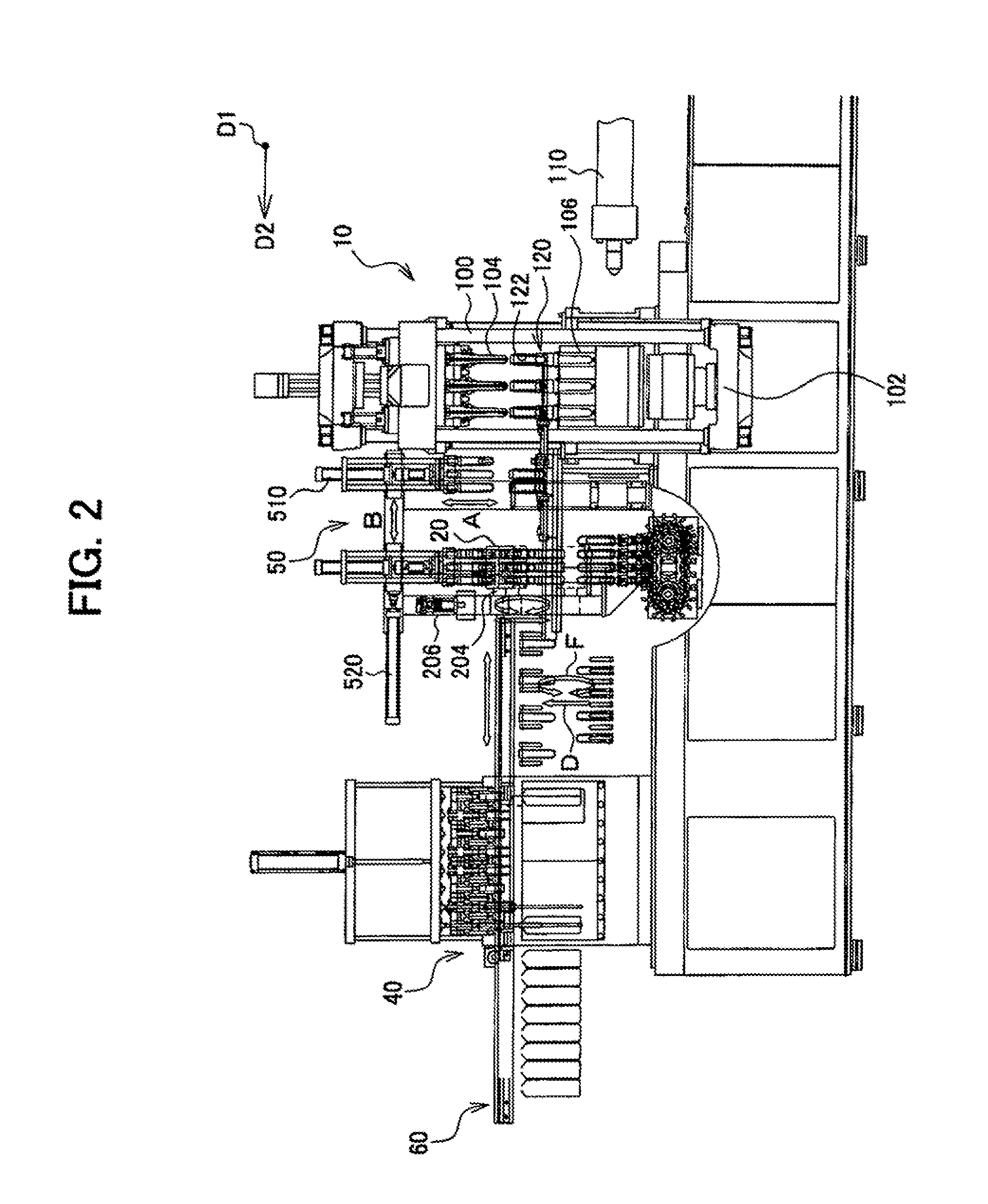Injection stretch blow molding device and molded part heating device
a heating device and injection stretch technology, which is applied in the direction of mechanical conveyors, domestic applications, other domestic articles, etc., can solve the problem that the thermal energy required to heat the preform to the optimum blow temperature is unnecessary
- Summary
- Abstract
- Description
- Claims
- Application Information
AI Technical Summary
Benefits of technology
Problems solved by technology
Method used
Image
Examples
Embodiment Construction
[0089]Exemplary embodiments of the invention are described in detail below with reference to a comparative example. Note that the following exemplary embodiments do not in any way limit the scope of the invention defined by the claims laid out herein. Note also that all of the elements described in connection with the following exemplary embodiments should not necessarily be taken as essential elements of the invention.
1. Injection Stretch Blow Molding Device
[0090]FIG. 1 is a plan view illustrating an injection stretch blow molding device, and FIG. 2 is a front view illustrating the injection stretch blow molding device. As illustrated in FIGS. 1 and 2, an injection molding section 10, a cooling section 20, a heating section 30, and a blow molding section 40 are provided on a stage 1 of the injection stretch blow molding device.
[0091]Several embodiments of the invention implement a 1.5-stage injection stretch blow molding device that utilizes a 1-stage method in which the injection ...
PUM
| Property | Measurement | Unit |
|---|---|---|
| temperature | aaaaa | aaaaa |
| temperature | aaaaa | aaaaa |
| diameter | aaaaa | aaaaa |
Abstract
Description
Claims
Application Information
 Login to view more
Login to view more - R&D Engineer
- R&D Manager
- IP Professional
- Industry Leading Data Capabilities
- Powerful AI technology
- Patent DNA Extraction
Browse by: Latest US Patents, China's latest patents, Technical Efficacy Thesaurus, Application Domain, Technology Topic.
© 2024 PatSnap. All rights reserved.Legal|Privacy policy|Modern Slavery Act Transparency Statement|Sitemap



